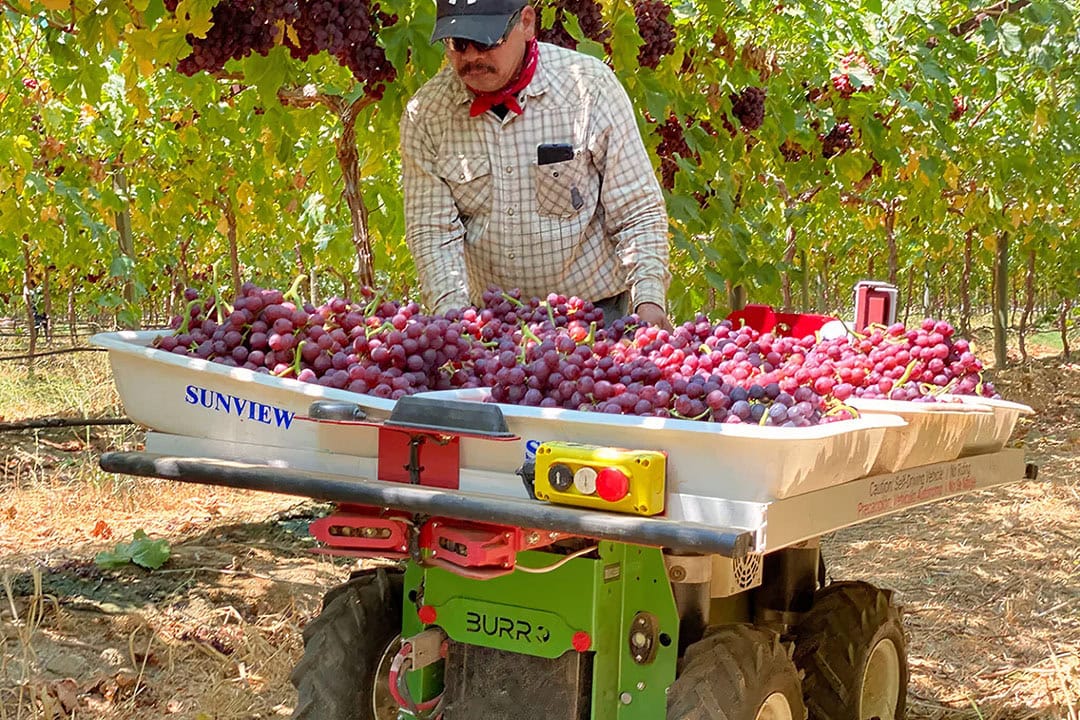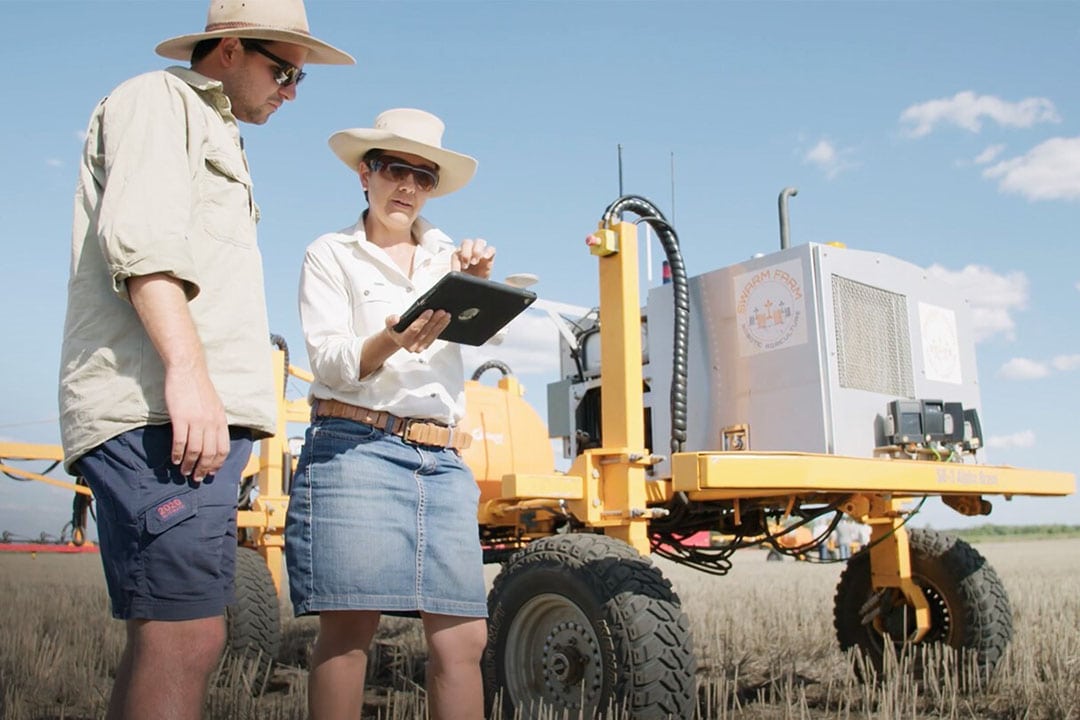The worldwide search for harvesting robots

Harvesting is a big challenge in agriculture. Labour shortages have already affected exports. But harvesting robots are still thin on the ground.
Participants at a round table talk at the international agricultural robot event FIRA in Toulouse agreed that agricultural work force worldwide is aging and the new generation of workers is not eager to pick up agricultural work.
“Labour shortages have affected our exports”, Nicky Molloy, business innovation advisor within Callaghan Innovation’s Agritech team in New Zealand said. “We haven’t been able to get our products out and off the trees and vines at times.”
Harvesting technology is rare and not affordable
The available harvesting technology is rare and not affordable, she said. “Even the large corporates are challenged by the cost of taking on this technology for the short space of time that it’s needed, for three or four months a year when you’re picking.”
Walt Duflock, Vice President of Innovation at Western Growers in the US, agreed that harvesting is crucial. “For me picking would have priority in robotics”, he said. Duflock expects entrepreneurs that can put a robot together with a good business model for growers, will do most of the innovation.
“We see the change happening from the agtech start-ups and the good robot builders that deliver the robots to the growers at the economics that work for them, and the service that works for them. If the tractor breaks down on a Saturday, you will have to see them before Monday, because harvest is time critical.”
Family workers have gone away
California based Western Growers selected 13 innovators last year for the inaugural cohort of its Global Harvest Automation Initiative, a project that aims to automate 50 percent of specialty crop harvest within 10 years by accelerating the commercialisation of harvest automation innovations.
Labour costs in specialty crops in the US can be 20% to 40% of total revenues. And there has been a drop in labour in family farms, that sold out to larger corporations. “Al lot of family workers have gone away and left it to the hired workers”, Mr Duflock pointed out.
There are no cases, that I am aware of, where agricultural robots have taken any jobs
“For now, it’s the number one challenge. Both in available labour and in costs. And at the moment there are no cases, that I am aware of, where agricultural robots have taken any jobs. And there’s probably a gap in labour globally. We do not have enough labour to meet the needs of the industry.”
Robots as a service
Mr Duflock expects medium or smaller farmers will buy robotic technology as a service per acre or hectare. Larger companies will buy the equipment outright. Commercial considerations like this are important for startups that are developing their product, he believes. “As you build your robot, build the path to market.”
In the US many start-ups with weeding solutions offer a price per acre, Mr Duflock said. “Farmers don’t think of it as a capital equipment sale. Some of the harvest start-ups that aren’t with us any longer were building really cool innovative technologies, but they did not have enough line of sight to convince the investors and the growers that the next set of venture capital would get them there.”
As a young start-up, you want to take a little bit more entrepreneurial risk and go to that mid-tier dealer
Mr Duflock sees a lot of young start-ups that want to have conversations with John Deere. “You really don’t”, he said. “John Deere and RDO, the largest John Deere equipment dealer, see thousands of opportunities for partners. As a young start-up, you want to take a little bit more entrepreneurial risk and go to that mid-tier dealer. And you are going to need to service the areas where your growers are operating.”
Matt Grant, Founder and CEO at Rancho Nexo in Mexico, said that Mexico and other parts of Latin America are not necessarily rich in labour. Access to skilled labour and labour that has a desire to work in agriculture is often the biggest challenge, he pointed out.
Text continues underneath image

Localised solutions
Mr Grant emphasised that finding a partner is important for robot builders that enter a market. “You need localised solutions. Sometimes it’s as simple as speaking the language. Across Latin America regulatory hurdles can be a lot more significant than in other areas in the world. And require partners on the ground to lead you through the hurdles. I’ve seen folks put equipment in the mail, on a UPS truck. That doesn’t work. Do your homework before you go to market.”
Service is the key concern of farmers, Mr Grant said. “I spent some time in a John Deere dealership and our top priority was customer service. And that means parts availability for example. Farmers are not able to wait.” Mr Grant knows no customers in Latin America that already use autonomous robots. “We are still in an early stage,” he said.
Aerial drone spraying
Paul Voutier, Senior Advisor Innovation at Grow Asia in Singapore, has the same experience in his region. “There is little interest in ground-based robots in South East Asia,” he said. “But an interesting example is what XAG has done in China with aerial drone spraying. There the government and the industry are working together. The Chinese government really saw an opportunity for aerial drones to reduce the cost of labour for farmers and to develop an industry that they could take globally. It worked very well through subsidies and government funded research.”
Mr Voutier emphasised that the drones in China are owned by service providers. “So, they are amortising that drone over many farms. They are actually moving the drones around in China as they are needed in different parts of the country. I think that is an important lesson to learn getting utilisation up in ground-based robots.”
Lack of integration
Ms Molloy said that there are many agricultural technology initiatives in New Zealand at the moment. But there is still a lack of integration. “For harvesting there’s no one-size-fits-all solution in orchard growing systems for example. Also, because every orchard is slightly different in certain ways.”
She said there are multiple challenges for robotic companies in scaling up. Stakeholders worldwide should join forces and come to affordable solutions, according to Ms Molloy. “We can’t do it from New Zealand alone.”
We’d love to autonomously harvest but we need the harvest robots first. That’s the problem at the moment
Even in the US, the use of autonomous robots is still quite rare, Mr Duflock pointed out. “We’d love to autonomously harvest but we need the harvest robots first. That’s the problem at the moment. Autonomy does not directly solve a problem that the farmer loses sleep over, but harvest automation does.”
Mr Duflock has seen autonomous harvest assistance on the farm, such as Burro, a robot that ferries grapes from pickers in the field to packers putting grapes into clamshells or bags before the fruit gets loaded up and shipped to grocery stores. ”This saves an awful amount of time over an eight hour shift”, he said. “Although it is not truly autonomous because the workers stop it to put the grapes on the truck. We need the actual robot that helps the Burro.”
Also read: Burro CEO: “United States has great potential for field robots”
Mr Duflock said that – with the rise of automation – farmers need a new generation of farm workers that are more technical and understand agronomy, engineering and computer science. He said Western Growers is working hard with the universities in California on a programme that can deliver students with those skills. “Without people that manage these robots, the robots are not going to get market adoption”, he said.
Text continues underneath image

Opportunities for automation in South East Asia
Labour on farms in South East Asia is also scarce and technology does not offer the solution yet. A lot of people that used to work on the farms, moved into the cities, Mr Voutier explained. “And farms are often very remote, in terms of road access and mobile coverage. That makes it quite difficult for technology providers.”
But he certainly sees some opportunities for automation in South East Asia, for example on palm oil plantations. “And we see the emergence of more farmers in specialty crops, in nuts and fruits and so forth. Those farmers are connected to modern supply chains and supermarkets. With agricultural robots we have to think about where automation can add the most value.”
Voutier also sees opportunities for technology in South East Asia on the farming systems around the larger urban centres. “These farmers have a little bit more land, a high profit margin and are using external labour on their farm. There are some gaps there, where robots can fill a role.”
‘Show-me kind of guys’
Other parties in the value chain, such as buyers of agricultural products, could also be interested in new technology, to obtain a more consistent product or to bring the prices down. Voutier: “I think these buyers eventually will be partners with farmers in adopting and taking automation to scale.”
Mr Grant explained that in Latin America the opportunities for automation and robotics lie with scaled operations, such as the larger corporate farms. And robotic companies have to focus on high value crops, where there is a lot of labour involved, according to Mr Grant. “That’s where the return on investment is the easiest. We have to follow the money. And we’ll have to find the guys that are willing to invest. Robotic companies have to speak the farmer’s language. Farmers are show-me kind of guys. You’ve got to have something that stands up under field conditions and creates value.”
Join 17,000+ subscribers
Subscribe to our newsletter to stay updated about all the need-to-know content in the agricultural sector, two times a week.



